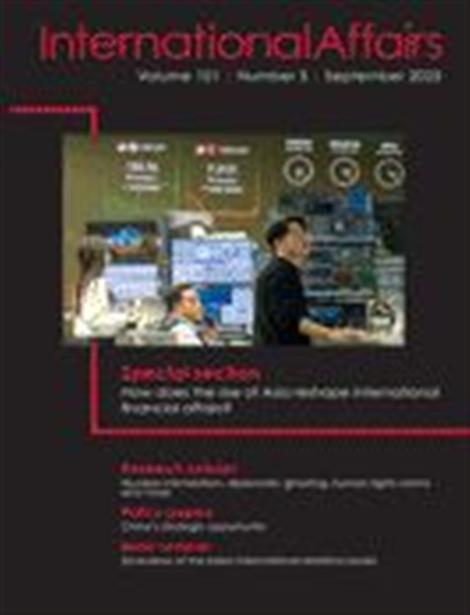


How does the rise of Asia reshape international financial affairs?
Rethinking and arresting Eurasian hegemony: the centrality of central Asia to Indo-Pacific strategies
in China’s bid for Eurasian hegemony. Control of the region would grant China vital resources, connectivity, and even maritime options, challenging the U.S.-led order. Revisiting Eurasia’s “heartland” underscores its enduring importance in global power shifts.
Corridors, pipelines and electrons: modalities of economic engagement by central Asia with the Indo-Pacific
This article examines how landlocked central Asian states practice economic statecraft toward the Indo-Pacific. Using the concept of “omni-enmeshment,” it shows how they move beyond hedging by integrating with actors such as China, India, Japan, and the UAE through trade, transport, and energy projects, reshaping regional dynamics and highlighting their growing agency.
Boundary work and the (un)making of global cooperation: mapping the terrain
While borders are on the rise in both political practice and academic research, more mundane practices of boundary work continue to make, remake and unmake transnational knowledges, spaces and identities. In this special section, we argue that global politics unfolds through boundary work, an understudied but highly effective set of ordering practices that shape the conditions for and dynamics of global (non-)cooperation.
(In)visibility of African borders: a decolonial examination of the African Union's boundary practices
Dieser Artikel zeigt, wie die Afrikanische Union trotz antikolonialer Rhetorik koloniale Grenzziehungen stärkt und indigene afrikanische Grenzen unsichtbar macht. Mit einem dekolonialen Blick analysieren die Autor*innen politische Praktiken, die Kolonialismus in Afrika ungewollt fortschreiben. Ein faszinierender Beitrag für alle, die sich für afrikanische Politik, Grenzfragen und die verborgene Macht kolonialer Strukturen interessieren.
How does the rise of Asia reshape international financial affairs?
Rethinking and arresting Eurasian hegemony: the centrality of central Asia to Indo-Pacific strategies
in China’s bid for Eurasian hegemony. Control of the region would grant China vital resources, connectivity, and even maritime options, challenging the U.S.-led order. Revisiting Eurasia’s “heartland” underscores its enduring importance in global power shifts.
Corridors, pipelines and electrons: modalities of economic engagement by central Asia with the Indo-Pacific
This article examines how landlocked central Asian states practice economic statecraft toward the Indo-Pacific. Using the concept of “omni-enmeshment,” it shows how they move beyond hedging by integrating with actors such as China, India, Japan, and the UAE through trade, transport, and energy projects, reshaping regional dynamics and highlighting their growing agency.
Boundary work and the (un)making of global cooperation: mapping the terrain
While borders are on the rise in both political practice and academic research, more mundane practices of boundary work continue to make, remake and unmake transnational knowledges, spaces and identities. In this special section, we argue that global politics unfolds through boundary work, an understudied but highly effective set of ordering practices that shape the conditions for and dynamics of global (non-)cooperation.
(In)visibility of African borders: a decolonial examination of the African Union's boundary practices
Dieser Artikel zeigt, wie die Afrikanische Union trotz antikolonialer Rhetorik koloniale Grenzziehungen stärkt und indigene afrikanische Grenzen unsichtbar macht. Mit einem dekolonialen Blick analysieren die Autor*innen politische Praktiken, die Kolonialismus in Afrika ungewollt fortschreiben. Ein faszinierender Beitrag für alle, die sich für afrikanische Politik, Grenzfragen und die verborgene Macht kolonialer Strukturen interessieren.
